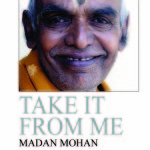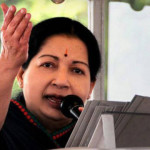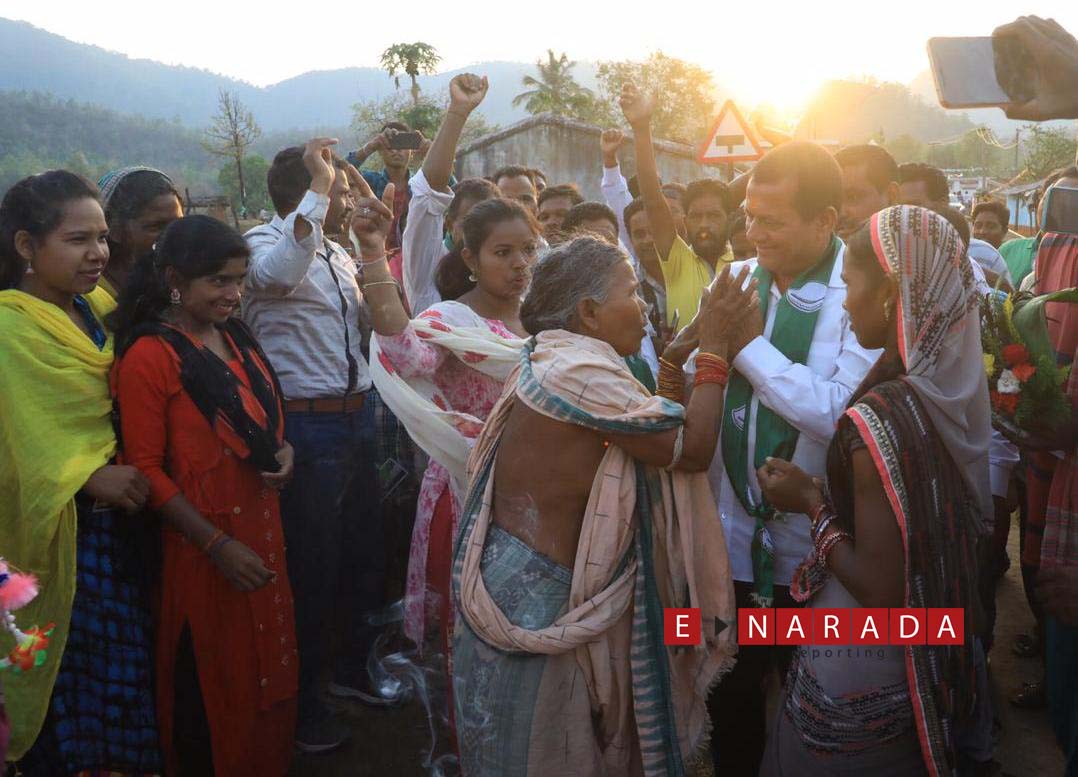ENARADA, New Delhi
By AJAY N JHA
Apart from the all-pervasive reach and nuisance value of social media which is acting as the most instant message carrier of both city and village folks, poll surveys have become or been made an equally important weapon to impress upon the voters on the respective strength and weakness of the rival political parties. Rib-tickling cartoons of RK Laxman, Sudhir Dar, Unni and Sudhir tailing era have been replaced by all kinds of spoofs and caricatures on the internet driven apps and even on the screens of various TV news channels.
New media variations and varieties which have been dominated by social sites like twitter and facebook are proving to be more fast, deadly and diabolical in tarnishing images, destroying reputations, wrecking up old sores and whatever remained left, have been completed by ‘sting operations’.
Politicians of all ilk are more afraid by hidden camera than anything else and they seem to be all the more petrified by what even a little mischief and misdemeanor would be amplified and how manifold.
Moreover, it is perhaps for the first time and many journalists and newspapers have become a part of the bigger game in terms of projection and slanted reports. The majority of media persons used to be neutral to a decent level in their field reports. But the advent of “paid news syndrome” appears to be fast spreading like cancer and has already started eating into the vitals of media itself.
Tribune has started becoming trivia. Gossips have become garrulous and “neutrality” has become premium in the majority of newspaper and TV channel reports. And those scribes who have still been honest to their “beat and professional propriety” have been labeled as ‘opponents or sympathizers’ to a particular party or its line of thinking.
More or less, the same malaise could be seen in the plethora of Poll survey organizations which spring up on the every of every elections. Not only there has been a phenomenal increase in the number of Poll survey agencies and organization, their surveys have been as fast and frequent as instant coffee maker. Dishing out so many surveys on the basis of just a sample of 300 to 30000 people and presenting them as the “mood of the nation” is a dangerous game which does not do justice to the likes and dislikes of such a huge country of ours with almost 125.4 crore population.
Moreover, the pattern and placement of issues also smack of a hidden agenda on behalf of some political parties with a view to create some kind of ‘perceptional notion and influence on the voters’. The flood of surveys conducted by Aam Admi Party during Delhi state Assembly elections can be cited as the most recent example which created a ‘smoke screen’ in its favour and became a part of the AAP agenda.
In fact, predicting election results in a particular State Assembly or parliamentary polls was quite accurate till a few years ago. It started losing its credibility after the sample survey pattern started getting vitiated and on many occasions, short cut methods started getting adopted.
The Congress party used to depend a lot on these survey reports and Congress Spokespersons used to take pride in quoting those data and figures to create the “mahaul” for their party. However, at least 5 survey reports on Bihar in October 2010 went haywire. None of these big suvey teams and Companies who charged lakh of rupees had the inkling of the Congress party’s worst drubbing in Bihar since Independence. The Congress party leaders were gloating over the survey reports that the party would get 60 to 90 seats out of the total of 243 seats in Bihar. At the end, it could manage only 4 seats.
The Uttar Pradesh experience too, was more or less, the same. At least 5 surveys painted a rosy picture of the Congress party’s gain. They suggested at least 60 to 65 seats for the Congress. Star Nelson was the only party which went to the extent of saying that SP would hit 215 mark. But all surveys went wrong on the actual number of seats. No survey could gauge the voter’s mood with regards to its attitude and response towards the Congress party which ended up getting just 28 seats out of the total of 403 seats.
The recent experience of Himachal and Meghalaya have been more or less accurate. But the predictions with regard to Both Tripura and Nagaland went off the mark. Some survey reports gave Congress party at least 30 seats in Tripura while 25 seats in Nagaland. At the end, the Congress party ended getting 10 seats in both the States!!
One of the most unfortunate parts has been the commissioning of surveys by a few Congress party leaders themselves. The purpose behind that has been to grab more seats for their supporter groups. This was seen in Uttar Padesh where at least 6 different groups of Congress leaders engineered surveys to please the party high command and all of them failed.
The elections also become a 5 yearly festival for a few ‘survey firms and companies’ which make tailor made reports to suit masters and prove a few points. In smaller States, they maintain their relevance because 1/10th sample does give a sense of direction about the voters’ mood and their inclination. But in larger states like Uttar Pradesh and others, their samples and prescriptions become that of a Quack than of an expert.
The main reason is, dishonesty in the samples. Those boys and girls who are entrusted with the job of sample collection, don’t venture out in the heat and cold, to the far flung areas and get the exact feedback. Instead, they would sit in some cozy corners and “fabricate and manufacture” those data.
Yet another factor is the pattern of sample questions itself. The sample questions for Himachal Pradesh for example, cannot be the same for Karnataka, Kerala, Arunachal Pradesh or Jammu and Kashmir whose ethics and ethos, tenor and temperament is entirely different.
At least 90 percent of those survey agencies which have been on the job, have been obsessed with the actual number of seats expected for BJP and NDA apart from the projected Success of Modi as a mass movement, Modi as the Tsunami and Modi as the biggest phenomenon of 2014 LS polls.
The survey reports released by at least 6 agencies have been giving NDA in between 220 to 259 seats. While there is unanimity on the fact that the BJP-led NDA is clearly well ahead of the UPA, and seems set to form the next government after 16 May. The only doubts relate to the scale of its victory. The Lokniti-CSDS-CNN-IBN Election Tracker, which concluded its state-wise poll results yesterday, also seems to point in the same direction, while the ABP News-Nielsen survey gave the NDA 236 seats (UPA – 92). NDTV (in its March survey) gave the NDA similar numbers (230), and it is set to conclude its latest survey tonight before the Election Commission’s deadline tomorrow.
Yet history has been replete with examples when the so-called hype and hoopla created by these surveys turned upside down and that way Modi bhakts could be well-advised to hold their horses till the final verdict is out on 16th may. The BJP poll managers would need to remind themselves about the verdict of 2004 when almost all surveys predicted an NDA victory, and India ended up with the UPA. India shining campaign went for a toss. The results in 2009 were less wayward, but nobody predicted the scale of the Congress victory to go up to 206 because even the Congress party War room warriors were not sure of crossing 150 seats.
My gut feeling is that the final outcome of 2014 Lok Sabha polls would not be ‘surprise and pitfall-free’ either. The biggest pitfall in predicting an Indian election comes from converting vote shares to seats. This is because concentrated vote shares can give some parties more seats, while diffused votes can cost other parties seats. “In 2008, the BJP won Karnataka despite polling fewer popular votes than the Congress. Last year, the Congress swept the polls despite increasing its vote share by just around 2 percent. So, even though the BJP appears to be doubling its vote share this time, according to many opinion polls, a lot of the extra votes may be coming from areas where it may be getting no (or few) seats. So BJP partisans should wait awhile before ordering the bubbly – or chai, if that’s their preference this time, in honour of the “chaiwala” they plan to send to 7, Race Course Road” said a veteran poll watcher.
Secondly, the undecided voters tend to make up their minds closer to voting day, when they know which way the wind is blowing. This is called the ‘bull-whip’ effect, where a party that is ahead suddenly reaps a huge harvest of last-minute votes that push its seat totals in a favourable direction – beyond what the opinion polls indicated. Opinion polls cannot capture the bullwhip effect even though exit polls can go to a great extent.
It was this bullwhip effect which gave the Samajwadi Party a clear majority despite getting less than 30 percent of the vote in 2012. This could happen in 2014 too for the BJP, if the undecided and floating voters finally decide to vote for Modi in the belief that he is the winner.
In the past, many poll surveys have been a little off the mark on their predictions about the voting pattern and percentage of the minorities and they would be perhaps more outlandish and outwitted in between Modi and Mulayam standing on two ends of the spectrum, thanks to Amit Shah’s angry outburst.
The danger is that despite all the care, there is a possibility – even probability – that the minority vote may spring a surprise. Since it is well known that Muslims may be voting tactically this time to defeat the BJP under Modi, one cannot truly estimate the impact their voting will have on the BJP’s chances. If they truly vote tactically in all seats in UP and Bihar, the BJP tally could even fall below 30. If they split their vote between two parties in many places, the results could be more favourable to the BJP. However, the chances are the impact of the Muslim vote is being under-emphasised this time in both UP and Bihar – because they may be undercounted, because they may be more motivated to come out and vote, and because they may have preferred to mislead pollsters for the time being while they decide who to cast their vote.
On the other hand, there is also the reverse possibility: any hint of a Muslim polarisation against Modi could prompt the reverse among the majority community. “Apart from minorities, Dalits also tend to get mis-estimated in opinion polls. This is why Mayawati could be the X factor in Uttar Pradesh this time. If both Muslims and Dalits turn up to vote in large numbers – the former to defeat BJP and the latter to vote for Maya – UP could spring a last-minute surprise,” says a veteran commentator.
Yet another point of debate is the ‘Modi factor’itself. Opinions vary drastically on the pull-up impact for BJP in the name of Modi since Modi is said to be making inroads in this voter base too, given his most backward status. Yet no poll survey appears to have even come nearer to the ground reality in terms of expected percentage of votes or seats it would accrue to BJP.
Above all, there is something called the couch potato effect. If too many Modi voters think their man has already won and don’t turn up at the polling booths, preferring to watch the action on TV, the BJP could still end up with fewer seats than its vote share predicts. The real issue is those who feel threatened by Modi may have a superior motivation to vote than those who don’t. The polls predict armchair voting intentions better than actual votes. So that’s another uncertainty. Urban voters also tend to be lazier than rural ones – and urban voters are key to Modi’s vote. In the ultimate analysis, political parties can’t count their chickens unless they can herd their voters to the booths on polling day.
The saffron brigade which may not have built its party organisations sufficiently between 2009 and now in critical states such as UP, may find that there is a gap between voter intentions and votes. This may be a bigger threat to the BJP than the other parties.
It is also true that many poll surveys and opinion polls tend to undercount relatively new undercurrents and over-count obvious trends. This was demonstrated clearly in Delhi, where the undercurrent was against the Congress, but most of this vote was presumed to go to the BJP. The Aam Aadmi Party’s vote shares got massively undercounted in opinion polls before December 2013 because many voters did not believe the party could win – and yet they voted for it. The opinion polls failed to get this correct – and some pollsters were changing their stories on voting day as they witnessed massive concentrations of AAP voting in many areas. Nobody predicted Sheila Dikshit’s defeat – and that too at the hands of the AAP.
Yet the BJP appears to have put all its eggs in the Modi basket to the extent of prolonging the labour pang in turning its manifesto from ‘Murlifesto to Modifesto’ which is likely to be released on the day of the first round of polling. This has also led to a fierce debate within the BJP core group itself on the question if Manifesto would really matter so much when the BJP and RSS have already made Modi bigger than the Manifesto.
(Posted on April 5, 2014 @ 11.45 pm)
(Ajay N Jha is a veteran journalist from both Print and Electronic media. He is Advisor to Prasar Bharti. The views expressed are his personal. His email id is Ajay N Jha <ajayjha30@gmail.com> )
The views expressed on the website are those of the Columnists/ Authors/Journalists / Correspondents and do not necessarily reflect the views of ENARADA.











